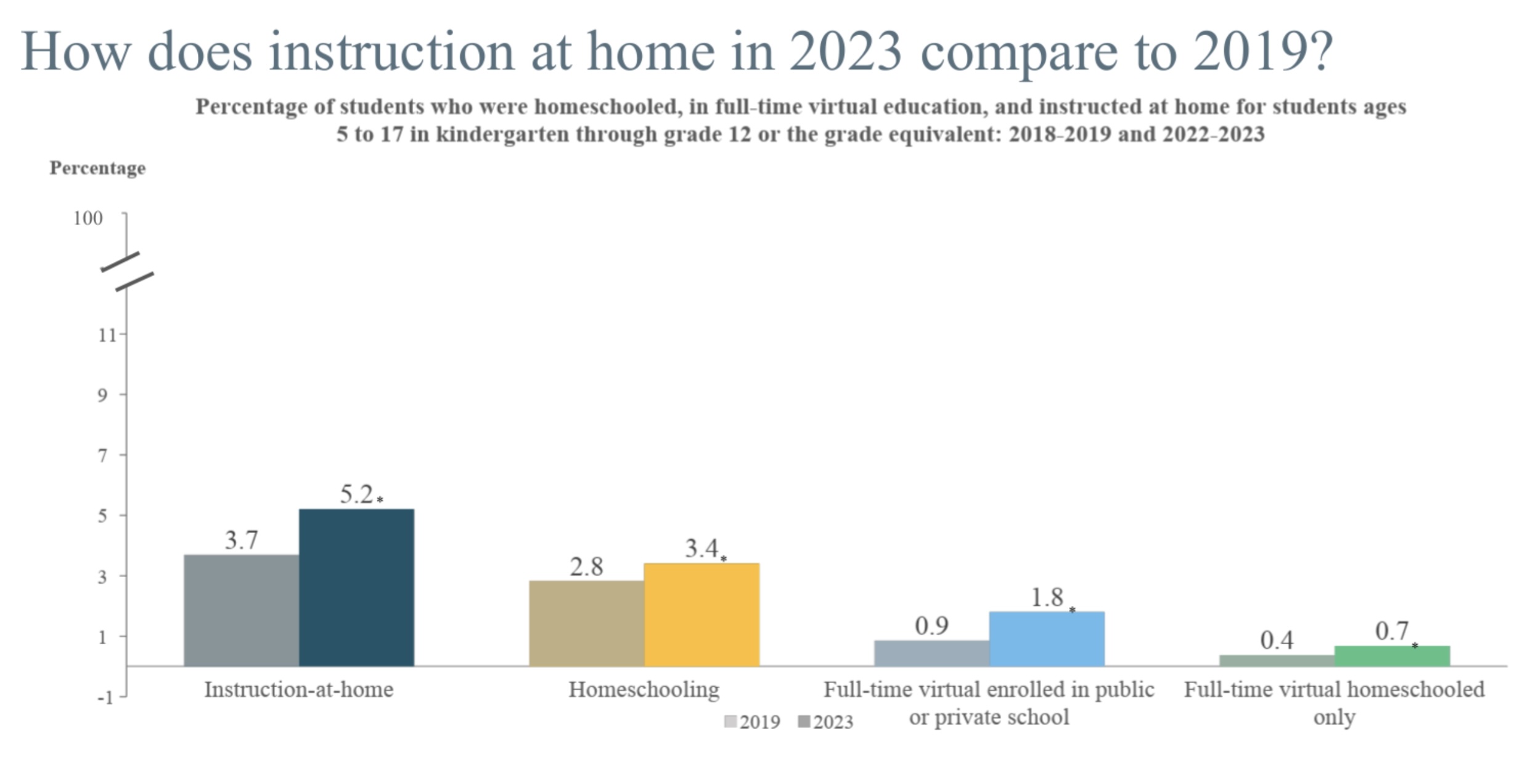“There is a certain irony that an administration of pro-school choice would reduce objective data that could help increase home education acceptance,” said Maranto.
We do not know what will happen to the unpublished data of the home school in 2023 or if the Department of Education will never collect statistics at home in the future.
In response to questions about the fate of data on home schools, the spokesperson for the Department of Education, Madison Biedermann, said that his research branch, the Institute of Education Sciences, is in possession of data and that it “examines how all its contractual activities can be used as best as possible to meet its statutory obligations”.
Last September, the Department of Education published some Preliminary statistics From the 2023 survey. He noted a low increase in traditional home teaching since 2019, but a strong increase in the number of students who were registered in an online virtual school and learning in time. Together, more than 5% of American students learned at home in these two ways. Less than 4% learned at home in 2019.

Researchers were eager to dig into data to understand the different flavors of home education, online courses to microscolars, which are tiny schools that often operate in private houses or places of worship. Researchers also want to understand why more parents opt for home teaching and what subjects they teach their children directly, all the questions included in the Parents Investigation led by the Department of Education.
The monitoring of the house school is notoriously difficult. Families who choose this option can be wary of the government, but it was one of the few investigations that the defenders of the home school cited to document the growth of their number and advised the writers of the Federal Survey on the way of formulating questions.
From 2020, the US Census Bureau also started collecting certain Home Teaching DataBut these statistics cannot be directly compared to the data in the education department and without historical file, the census data is less useful, the researchers said. It is also not known if these census data will continue. Some states collect data on home education, but the researchers said they were doing so in different ways, which makes it impossible to compare home education through the states.
Patrick Wolf, professor of education policy who studies the choice of school at the University of Arkansas, was also dismayed by the loss of statistics from the Department of Education.
“A agency of the federal government has been collecting national statistics on education since 1867,” he said. “State and local decision -makers and practitioners will be seriously challenged to do their job if they do not have good data from the federals concerning public education, private education and home education. The sending of educational authority to states only will work well if the federal government continues to collect and publish complete data on schooling. Otherwise, states and local officials are invited to fly blind. ”
Contact the editor Jill presented at 212-678-3595, jillbarshay.35 on signal, or barshay@hechingerreport.org.
This story about the School statistics at home was written by Jill Barshay and produced by The Hechinger reportAn independent non -profit press organization has focused on inequality and innovation in education. Register Evidence and others Newsletters Hechinger.



